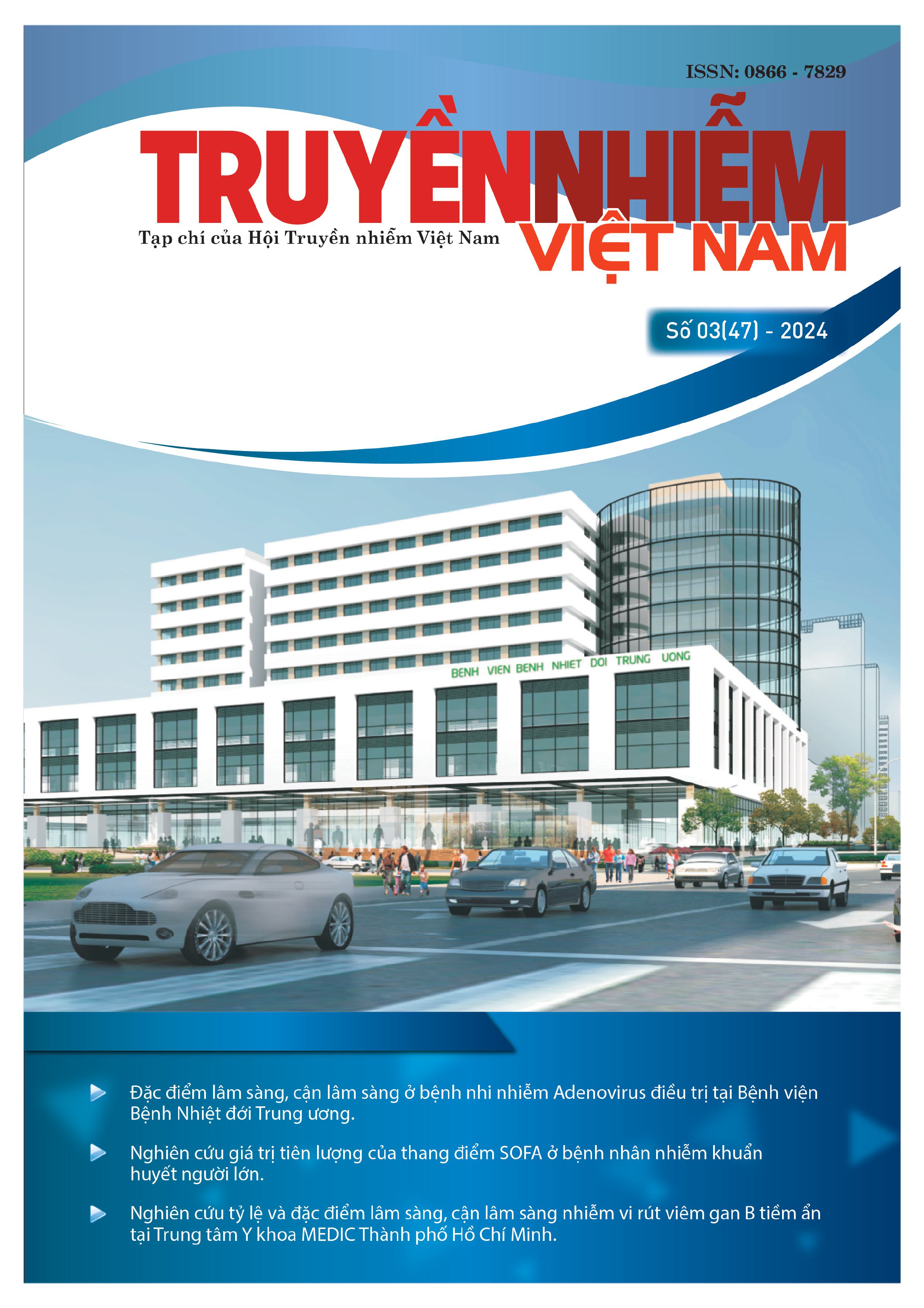SITUATION OF ANTIBIOTIC RESISTANCE OF BACTERIA CAUSING SEPTIC INFECTION AT NINH THUAN PROVINCIAL HOSPITAL
Main Article Content
Abstract
Objectives: Assessing the antibiotic resistance status of bacteria causing sepsis at Ninh Thuan Provincial General Hospital.
Objects, materials and methods: Analytical cross-sectional description. Take 689 culture samples containing bacterial strains that cause sepsis isolated at Ninh Thuan Provincial General Hospital from
October 1, 2022 to September 30, 2023.
Results: Bacteria causing sepsis are 75% Gram-negative bacteria, including Escherichia coli (29.2%), Acinetobacter Baumanii (26.4%), Klebsiella pneumoniae (19.4%); 25% are Gram-positive bacteria:
Streptococcus pneumoniae (11.2%), coagulase negative Staphylococcus (8.1%), Staphylococcus aureus (5.7%). Antibiotic resistance situation: Gram-negative bacteria are highly resistant to tobramycin, cefoxitin,
cefotaxime, bactrim, cefuroxime, ceftriaxon, ciprofloxacin, ceftazidime, levofloxacin, gentamicin, cefepime, tetracycline; Gram-positive bacteria such as coagulase negative Staphylococcus are resistant to cefoxitin (100%), azithromycin (76.2%), clindamycin, oxacilline (76%), erythromycin (75.5%); Staphylococcus aureus resistant to penicillin (100%), erythromycin (94.9%), trime/sulfame (92.3%), azithromycin (91.9%), clindamycin (91.4%), cefoxitin (79.5 %), tetracycline (74.4%), oxacilline (73.5%);Streptococcus pneumoniae was resistant to trimethop-sulfamethoxazole (87%), ciprofloxacin (55.7%), levofloxacin (54.9%).
Conclusions: Gram-negative bacteria are highly resistant to beta-lactams, so consider de-escalating treatment with the initial antibiotic Carbapenem, especially in septic shock. In addition, the rate of coagulase negative Staphylococcus increases in sepsis, so more research on this agent is needed in the future.
Article Details
Keywords
Antibiotic resistance, bacteria, sepsis
References
2. Vũ Thị Hương (2018), Đặc điểm lâm sàng, cận lâm sàng và kết quả điều trị nhiễm khuẩn huyết do Klebsiella pneumonia tại Khoa Hồi sức tích cực Bệnh viện Bạch Mai, Luận văn Thạc sĩ Y học, Trường Đại học Y Hà Nội, Hà Nội.
3. Hoàng Quỳnh Hương và cs (2021), Nghiên cứu tình trạng kháng kháng sinh của một số chủng vi khuẩn Enterobacteriaceae gây nhiễm khuẩn huyết phân lập được tại Bệnh viện đa khoa tỉnh Thái Bình năm 2018 - 2019, Y học Việt Nam, Tập 498, số 2 (2021).
4. L.B.Liên và cs (2016), Đánh giá nhiễm khuẩn bệnh viện tại Bệnh viện Nhi Đồng 1 sau 11 năm triển khai chương trình KSNK (2006 - 2016), Tạp chí Y học thực hành, 12(2016).
5. Trần Thị Thanh Nga và cs (2015), Tác nhân vi khuẩn gây nhiễm khuẩn huyết và sự đề kháng kháng sinh tại Khoa Hồi sức cấp cứu Bệnh viện Chợ Rẫy, Tạp chí Y học TP. Hồ Chí Minh, Tập 19, số 01.
6. Chu Thị Hải Yến, Phạm Thị Huỳnh Giao, Nguyễn Thị Hiếu Hòa, Trần Ngọc Thảo, Hồ Thị Hòa (2014), Khảo sát tỷ lệ đề kháng kháng sinh của vi khuẩn phân lập tại Bệnh viện Cấp cứu Trưng Vương.
7. Diekema Daniel J, Hsueh Po-Ren, et al. (2019), “The microbiology of bloodstream infection: 20-year trends from the SENTRY antimicrobial surveillance program”, Antimicrobial Agents and Chemotherapy, 63(7), pp. e00355-19.
8. Tacconelli E, Magrini N, et al. (2017), “Global priority list of antibiotic-resistant bacteria to guide research, discovery, and development of new antibiotics”, World Health Organization, 27, pp. 318-327.


